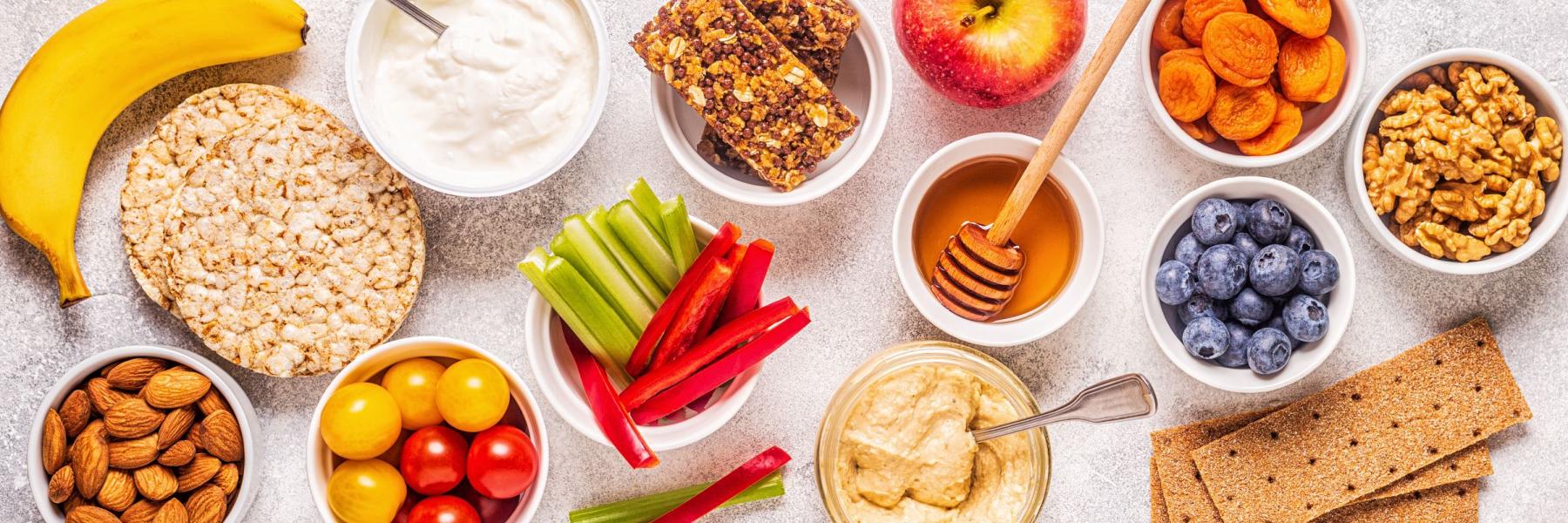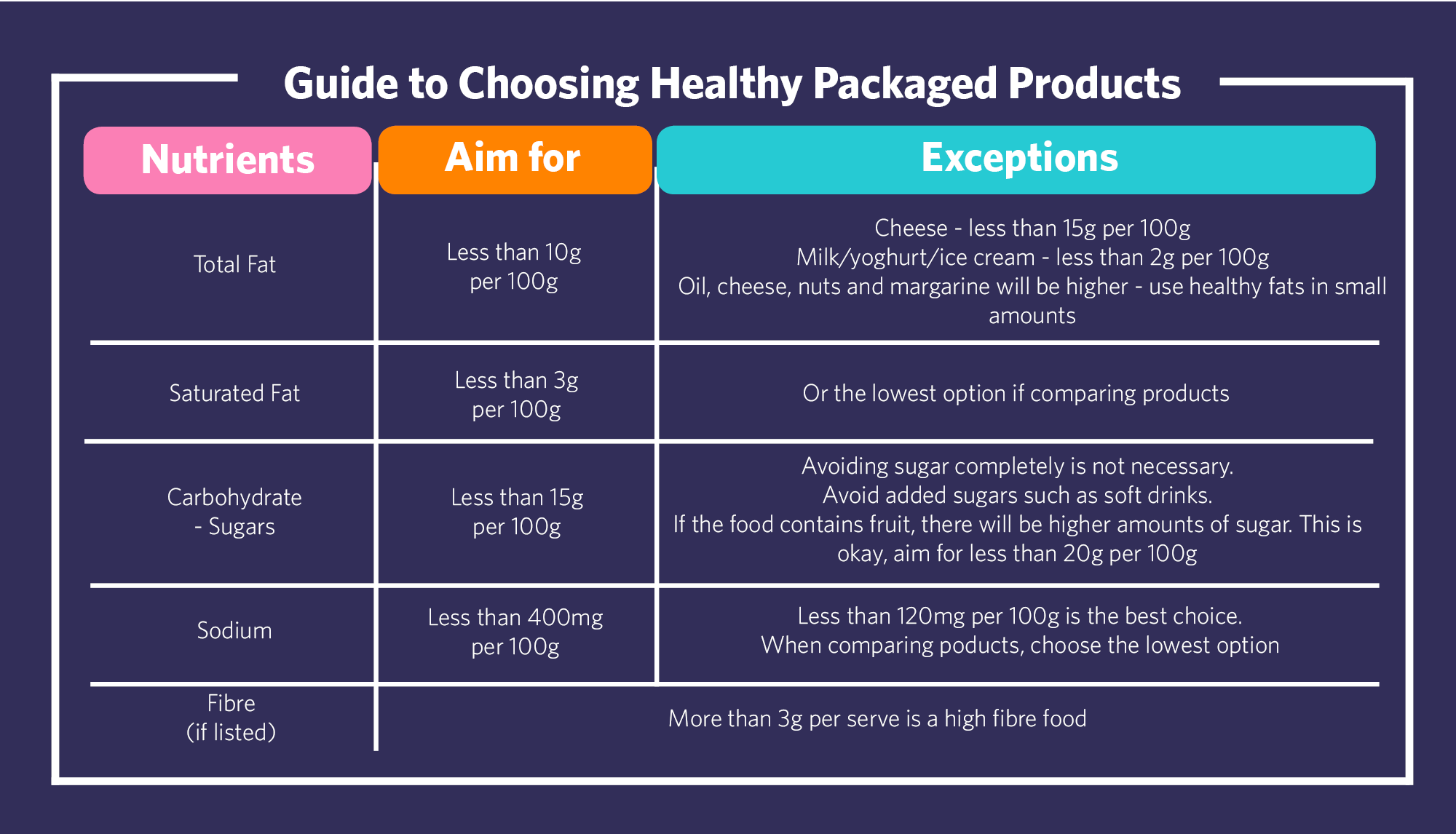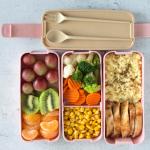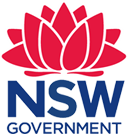
Healthy Snacks
Healthy snacks are an important aspect of a child's diet. Making sure your child's snacks are small portions and are not offered too often can allow them still to have room and be hungry at main mealtime. We suggest a schedule of regular meal and snack times, so their hunger cues have time to develop.
Choosing Healthy Snacks
Keep a variety of healthy snacks at home, such as:
-
Fruit.
-
Vegetable sticks with healthy dips, such as hummus or guacamole.
-
Natural yoghurt and fruit.
-
Healthy homemade muffins.
-
Dried fruit.
-
Egg, avocado, or cheese on crackers.
-
Peanut butter, or vegemite on rice cakes.
Try to avoid giving your child junk food, because it is a poor source of nutrition and will not satisfy their hunger.
Check out the following websites for more snack ideas and recipes:
Convenient choices
While fresh food is a good choice as they do not have added salt, sugar, or preservatives, it can sometimes be more convenient to choose packaged foods.
With so many products available, learning to read the food label can help you find healthier options. When choosing foods, always check the nutritional information panel and do not rely on the health claims on the packaging as they can be misleading.
Tips For Reading Food Labels:
-
When you look at the nutritional information panel, compare foods using the per 100g column. Products vary in serving sizes so comparing them would be difficult.
-
When working out how many kilojoules or a nutrient you get from a food, use the per serve column
-
Check your portion size is the same, what they call a serve may be different to what you eat
-
Use the label to compare similar products; do not compare yoghurt and biscuits
-
If something is listed in the first 3 ingredients, it will have a large amount of that product. If fat, sugar, or salt is listed in the first 3 ingredients consider looking for a different product
-
A great resource is the app FoodSwitch – By scanning a product’s barcode while shopping the app will supply a healthier alternative product if there is one.
When looking at the ingredients list, be aware that some ingredients go by other names such as:
Sugar = dextrose, fructose, glucose, malt, golden syrup, honey, maple syrup, sucrose.
Salt = baking powder, monosodium glutamate (MSG), sodium, sodium bicarbonate, stock cubes.
Saturated fat = Animal fat/oil, beef fat, butter, chocolate, milk solids, coconut oil/milk/cream, copha, cream, ghee, dripping, lard, palm oil, vegetable shortening.
Take a photo of this quick guide to use next time you go shopping.

If a food is high in fat, sugar, or salt, it does not mean you have to avoid it together. You can look at the food label and choose the healthiest choice available, or limit how often you eat this food.
For more information on label reading, see the Eat for Health website.
Related pages
How much should kids be eating?
Source: Eat for Health
Related Topics

A healthy lunchbox will help give your child everything they need to stay focused during the school day.

Bonding and socialising is an important part of a toddler's learning and development.


